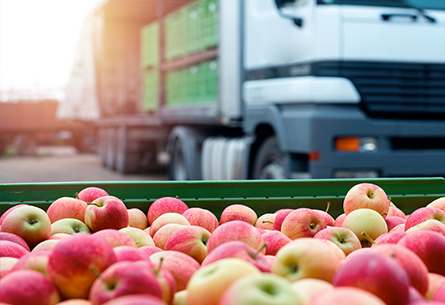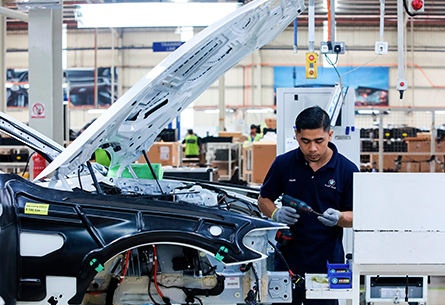From this point forward, Colombian exporters will have their textiles, apparel, design, and the U.S. These are located in California, Texas, Florida, New York, Georgia, and Illinois. This goes for the whole package, from raw materials and inputs to finished goods.
Colombian products with 0% tariff
- 99% of Colombian qualifying industrial and textile goods will become duty free upon the implementation of the FTA.
- 89% of Colombian agricultural goods will become duty free upon implementation of the FTA.
- Duties on many other tariff lines will be phased out over a period of up to 15 years, with some agricultural tariff rate quotas. While Colombia is expected to fill its new sugar TRQ, the FTA is likely to have a minor effect on U.S. imports and production of sugar and sugar containing products.

Key facts
The Colombia- U.S. FTA promotes trade in goods by eliminating tariff barriers, and by promoting the harmonization of technical regulations between both parties. As a result, FTA supports economic growth in both countries.
The FTA supports American jobs and improves American competitiveness since many American businesses use imports under this program as inputs to manufacture goods in the United States.
It is expected that the agreement will be effective in the second half of 2012, once Colombia accomplish all the agreement laws, regulations and policies. USTR is helping to accomplish these requirements as quickly as possible.
Colombia’s government is ensuring labor laws by promoting more protection rights for workers, to please and accomplish the strategic goals of the bilateral Labor Action Plan.
The USTR General Counsel, Tim Reif said that the FTA with Colombia is “well on the road” and is likely to be the next FTA to see implementation -GBD event on the pending FTAs.
United States Trade Representative Ron Kirk said “USTR has already started the work necessary to bring these agreements into force as soon as possible”- September 2011.
Colombia asked assistance in its labor to upgrade its workers rights from both the International Labor Organization and U.S. government. Mr. Kirk said:“It feels like they are absolutely meeting both the letter and spirit of what we asked them to do”.
Colombian products with 0% tariff
ATPDEA
The approval of the FTA extends the Andean Trade Promotion and Drug Eradication Act, ATPDEA, which was renewed until July 2013. The tariff preferences that many Colombian products have had shall be maintained with the FTA and therefore, sectors such as flowers, apparel, tobacco, cocoa, plastics and leather manufacturing, among others, shall be benefited.
In fact, both the ATPDEA preferences as well as the others that were agreed upon, shall be maintained over time, given that their persistence shall not be subject to unilateral U.S. Government and Congress decisions.
Agreements texts
The FTA is an agreement that generates opportunities for all Colombians, as it contributes to the creation of quality jobs and the improvement of the national economy’s performance. It benefits the exports sector, which will be able to sell its products and services under favorable conditions in the U.S. market.
The subjects that were negotiated were market access, in its two aspects (industrial and agricultural), intellectual property, investment regime, Government acquisitions, conflict resolution, competency, e-trade, services, environment and labor, among others.
The text of the agreement is embodied in one preamble and 23 chapters. The chapters cover aspects that reflect the general agreed-upon disciplines, many of which are common in multilateral and bilateral negotiations, and incorporate particular elements obtained by Colombia as well as by the United States in the negotiation.
For more details on the agreement, visit the Ministry of Trade, Industry and Tourism website at: http://www.tlc.gov.co/
FAQs about TLC
Yes, the rule of origin improved for the export of bras. The new rule gives immediate preferences to bras that have been cut and sewn in Colombia, while the previous standard was much more restrictive. Thanks to the FTA, we have eliminated tariffs on manufactured goods for the home. This market line had not been included in the ATPDEA, but it will now receive immediate relief, which will open important opportunities for Colombia. The FTA creates better access for raw materials, such as cotton, which means improved competitiveness for the Colombian textile industry.
The FTA, unlike the ATPDEA, opens the possibility for agreements on the figure of accumulation, which approves the incorporation of inputs from countries that are not members to the FTA. This figure is very important for Colombia because it allows for access to favorable terms of competitiveness, in respect to important inputs, such as denim, for domestic industry.
The FTA includes various types of shoes (made from synthetic materials) that were excluded from the ATPDEA, but under the FTA, these items will be duty-free, after completing the period of relief. It is worth mentioning that this sector of the economy is mainly composed of small and medium sized enterprises.
Indeed, MSMEs are the foundation of our economy, and most of them are in the field of trade and services. For this fact alone, they will be favored with the FTA. On the other hand, those in the manufacturing sector will also have access to cheaper equipment and raw materials, so as to meet domestic demand.
Over 80% of what Colombia buys from the U.S. is goods not produced in the country. Domestic SMEs, most of which are not exporters but rather serve the local market, still have to import equipment and raw materials. So now they will have access to such items at better prices.
Colombia reserved contracts of up to USD 125 000 for domestic SMEs. This extends to USD 250,000 for some entities that generate high volumes.
This office will help to identify opportunities in the U.S., as well as bottlenecks. It seeks to resolve specific problems and constraints on exports. The focus that we have helps us to make a series of reforms and adjustments, which sometimes cannot be realized because no conditions exited for this.
The trade liberalization process that Colombia is undergoing is moving hand in hand with the implementation of industrial policy, one of which is the Productive Transformation Program (PTP), led by the Ministry of Trade, Industry, and Tourism.
All the sectors that are currently in the PTP will grow with the FTA. These 16 sectors of our economy are working, through a public-private partnership, in the implementation of business plans to build these sectors into world-class players. These sectors include textiles and clothing, fashion and design, auto parts and vehicles, cosmetics and personal care, metallurgy and the steel industry, graphic communication, electric energy and its goods and services, health tourism, nature tourism, BPO&O, software & IT, horticulture, palm and vegetable oils & fats, biofuels, beef, chocolate, confectionery and its raw materials, dairy, and shrimp. Through the PTP, we are boosting these sectors of goods and services, so that Colombian businesses can make the most of the export opportunities that will open up with this FTA.







